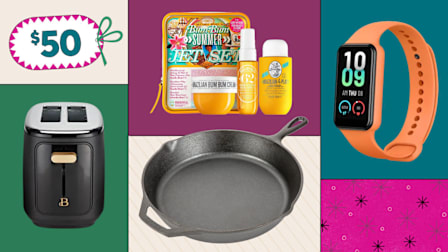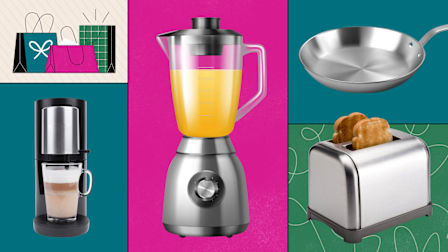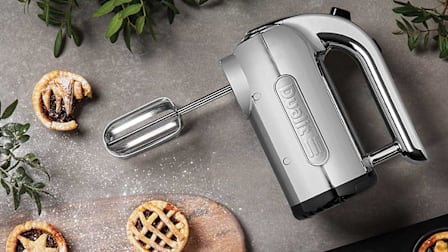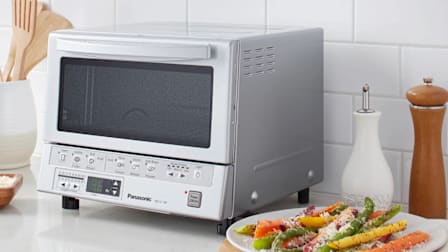3 Reasons to Choose a Hand Mixer Over a Stand Mixer
Plus, which attachments and features really matter
When you shop through retailer links on our site, we may earn affiliate commissions. 100% of the fees we collect are used to support our nonprofit mission. Learn more.
Not everyone needs an expensive, heavy-duty stand mixer like the ones seen on “Is It Cake?” or “The Beast.” If the extent of your mixing is whipping cream or making the occasional birthday cake or batch of brownies, an easily storable hand mixer will do just fine.
At Consumer Reports, we test hand and stand mixers, so whichever you choose, we have advice on the best options. If the following describes you, a hand mixer might be the better, less expensive choice.
You Mostly Make Light Mixtures
Hand mixers are perfect for light-duty jobs such as whipping cream or egg whites, mixing cake batter, making mashed potatoes, and mixing sauces and gravies.
You Don’t Have Much Space
If you’re short on counter or storage space, a hand mixer is your best bet. When you’re not using it, you can stick it in a drawer or cabinet. Many models come with storage cases that attach to the main body of the mixer and hold all the attachments. That way, you don’t have to search your utensil drawer for the beater you need.
You’re on a Budget
Hand mixers cost much less than stand mixers. The ones in our ratings range from $16 to $170 right now (prices vary over time). But in our tests, we’ve found that the lower-priced models typically don’t perform as well. That said, one of our recommended hand mixers, the Hamilton Beach Professional 7 62663, is priced around $40. So check our ratings before you shop, especially if you are on a tight budget.
By comparison, stand mixers in our ratings currently range from $52 to $1,000. But again, the lower-priced models tend to get the lowest scores in our tests. Of the top five stand mixers in our ratings, the least expensive is the Hamilton Beach Professional All-Metal 63240. At $280, it costs much more than our highest-rated hand mixer, the Breville Handy Mix Scraper BHM800SILUSC, which lists at about $130.
Hand Mixer Features to Look For
Once you decide a hand mixer can be your go-to, take note of the features. Some are more important than others.
Attachments: Hand mixers typically come with wire beaters, and some also include a whisk or dough hooks. Whisks have even thinner wires than the standard wire beaters and are designed to incorporate air into whipped cream and frothy egg whites. Look for beaters without a center post, which are easier to clean than those with posts. (You can find out which attachments come with which mixers in the Features & Specs section of our ratings chart.)
Speeds: Although many manufacturers tout the number of speeds of their hand mixers, in our tests, we’ve found that three is enough—low, medium, and high. (Use low when you start combining your wet and dry ingredients so the dry ingredients don’t go flying.) A few of the mixers in our ratings come with a slow-start option, which is even slower than low and even less likely to cause spatters. And when you’re whipping cream, which is what the high setting is for, start on the lowest speed and work your way up as the cream thickens.
Nice-to-haves: A few of the hand mixers we tested have interchangeable beaters, which means you can insert the beaters into either socket. Another nicety is an indentation on the underside of the body of the mixer that allows it to perch on the side of a bowl so it doesn’t suddenly tip over, making a mess while you’re busy measuring other ingredients. A few may also have a notch to hang the beater in a cabinet for storage.
Keeping Your Mixer Clean
Expect the goopy batters and other concoctions you make to cling to the beaters and maybe even splatter onto the mixer itself. Don’t be tempted to take cleaning shortcuts before you store the mixer and beaters. You’ll want them to be gunk-free and ready for the next time you need them.
KitchenAid, which makes some of our top hand mixers, recommends the following:
• Always unplug the hand mixer before cleaning.
• Eject the beaters. Swishing them in water can help remove the initial layer, and then you can put most in the dishwasher. (Check your owner’s manual first.)
• If you need to hand-wash the beaters, soak them in warm, soapy water.
• Never immerse the body in water. Instead, wipe it and the power cord with a damp cloth and dry them off.
Hand Mixers to Consider
Here are the top five hand mixers from our tests.
How CR Tests Hand Mixers
We test mixers on a variety of tasks. To test mixing performance, we make chocolate chip cookie dough because it’s thick enough to really challenge a mixer. We top off our performance tests by timing how long it takes to whip a half-pint of heavy cream into airy peaks.
We also judge noise when the mixer is running at the highest speed, but this might not be a concern because you tend to run one in such short bursts. To score mixers on convenience, we assess how easy it is to insert and remove the beaters and to adjust the mixer speeds.





























